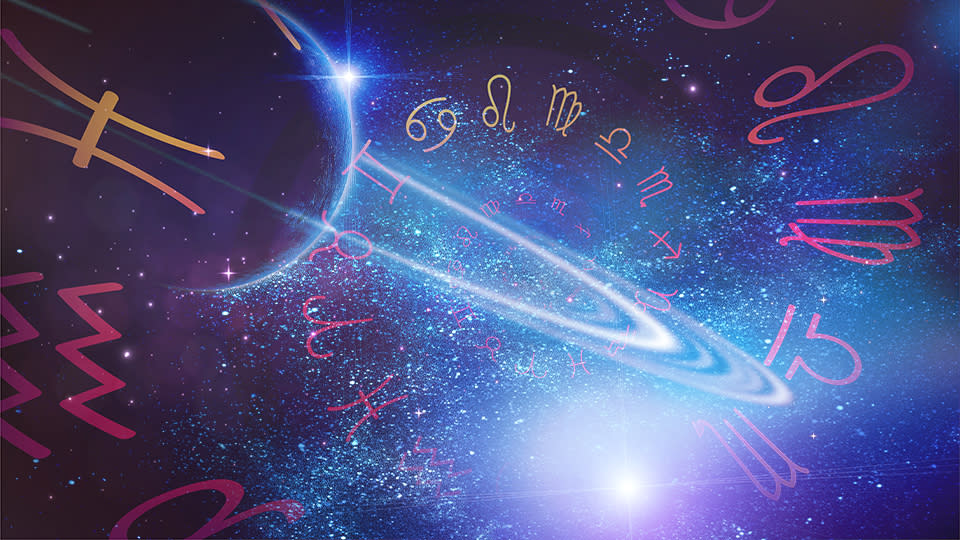What Is a Composite Chart? How to Understand the Astrology of Your Relationship

Like most astrologers and astro-lovers, I always enjoy trying to understand my relationships through a cosmic lens. The beauty of astrology is that it can tell you everything you need to know about a relationship, such as why I may experience communication issues with someone or how someone may perceive me. If you’re wondering how to get to the core of how a relationship functions, you’ll first need to learn what a composite chart is.
When my interest in astrology first began, I had primarily used a method called “synastry” as a means of gauging my compatibility with others, but it only offered a glimpse into the way two people could work together based on the way each of their planetary placements interact with one another. Although synastry has incredible merit, I felt like I was missing something integral that will help me better understand the astrology behind a relationship. For years, I wondered if there was an astrological chart that captures the relationship as a whole; as though the relationship was a unit in and of itself.
More from StyleCaster
These 3 Zodiac Signs Will Have a Stressful Week & They Can Blame it On the Full Moon in Leo
Your Weekly Horoscope Says Every Zodiac Sign Is Feeling Powerful, Thanks to the Full Moon
These 3 Zodiac Signs Are Feeling Successful This Week--Here's Why Victory Belongs to Them
In my quest to better understand how a relationship could function using the application of astrology to explain the nuances of my relationships, I came across something called a “composite chart”. Unlike synastry, composite charts offer a more meaningful look into a relationship instead of comparing how two individuals work together. By adopting this method in my astro-analysis, I realized that composite charts were the key to having a well-rounded view of what a relationship entailed from an astrological perspective.
Because calculating and understanding how to analyze a composite chart can see intimidating at first, it’s actually a lot easier than it looks. Here’s everything you need to know about composite charts and how they can shed light on whether or not two people are truly compatible:
Click here to read the full article.

What Is a Composite Chart?
Before we dive into what a composite chart is, you will need the following information to compute your composite chart – dates of birth (mm/dd/yyyy), exact birth times including AM/PM, and birthplaces for both individuals. Keep in mind that having accurate information is necessary to calculate any chart! Plus, you can compute a composite chart for any type of relationship. Calculate your composite chart on Astro Charts or AstroSeek.
A composite chart is the result of two birth charts added together to find the mathematical midpoint between each placement. It may sound initially confusing, but it’s essentially averaging the median point between each placement in the two individual charts to compose the composite chart. For example, if birth chart A has an Aries sun and birth chart B has a Gemini sun, then the midpoint would likely be a Taurus sun, which would become the sun sign for the composite chart.
This process is repeated for each planetary placement, such as planets, houses, aspects and more. Given that the composite chart is a compilation of mathematical midpoints, there will not be any retrogrades recorded in the composite chart. So, natal retrogrades in an individual’s birth chart will not translate to the calculation of the composite chart. Once you have calculated the composite chart, you might be surprised that it looks just like a birth chart. But looks are deceiving, so you will find that the composite chart reads a little differently from a birth chart!

How to Read a Composite Chart
Similar to a birth chart, the composite chart will have twelve houses, aspects and planets. Unlike a birth chart, the composite chart placements will represent the relationship, not the individuals. This will mean that the significance of the placements will change ever so slightly to accommodate for the astrological expression of a relationship.
The planets will represent the relationship’s personality, so this is the result of combining two individuals’ personalities to create the relationship’s personality. Likewise, the twelve houses will represent how the relationship handles and receives each area of life, so this is the result of two individual lives coming together to create one. So, the composite chart’s planetary placements and houses should be read as the following:
Composite sun: the relationship’s ego, vitality, identity and core focus
Composite moon: the relationship’s emotional expression and intuition
Composite Mercury: the relationship’s mental processing and communication style
Composite Venus: the relationship’s love language(s), relationship/commitment style, aesthetic and financial mindset
Composite Mars: the relationship’s ambition, drive, sexual energy and fighting style
Composite Jupiter: the relationship’s journey, luck and abundance
Composite Saturn: the relationship’s restrictions, boundaries and karmic lessons
Composite Uranus: the relationship’s innovation, uniqueness and instability
Composite Neptune: the relationship’s escapism, fantasy and spiritual essence
Composite Pluto: the relationship’s transformation, power dynamics and control dynamics
Composite 1st House: the relationship’s identity, appearance and first impression
Composite 2nd House: the relationship’s values, security and financial opportunities
Composite 3rd House: the relationship’s opportunity for local travel, communication and local environment
Composite 4th House: the relationship’s roots, home and family
Composite 5th House: the relationship’s pleasurable pastimes, self-expression, romance, sex-life and response to pregnancy/children
Composite 6th House: the relationship’s daily routine, service to one another and response to work/health
Composite 7th House: the relationship’s martial/commitment status and contracts
Composite 8th House: the relationship’s intimacy, secrets, assets, investments and debts
Composite 9th House: the relationship’s belief systems, opportunities for long-distance travel and exploration
Composite 10th House: the relationship’s status, legacy, accomplishments and responses to career
Composite 11th House: the relationship’s hopes, wishes, dreams, friendships and community
Composite 12th House: the relationship’s subconscious, hidden talents and hidden weaknesses
Ideally, the main planetary factors to focus on for a composite chart would be the sun, moon, Venus, Jupiter and Saturn. The sun and moon will speak to the strength, ego, and emotional regulation within the relationship. Then Venus and Jupiter may represent the aspects of the relationship that come easily or function well whereas Mars and Saturn may represent shared difficulties in the relationship. Typically, the 1st and 7th Houses will be the most important since this refers to the relationship’s identity and commitment. However, a romantic composite chart may also find the 2nd, 5th and 8th houses to be just as important. A platonic or familial composite chart may focus more on the 3rd, 6th, and 11th houses.
Although it can be challenging to learn something new in astrology, you will find that there is an immense wealth of information about a relationship in a composite chart. Once you begin considering the composite chart alongside synastry in relationship readings, you’ll never go back!
Related: Your Saturn Return Is the Most Dramatic Thing You’ll Ever Go Through
Best of StyleCaster


